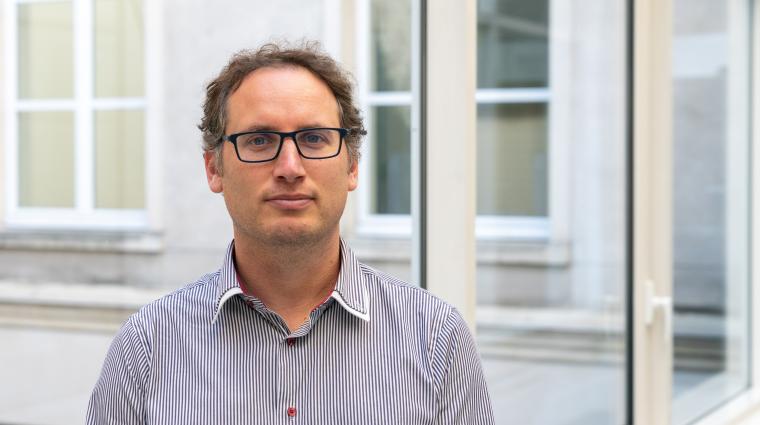
The investigations into the presence of SARS-CoV-2 in Luxembourg wastewater have received plenty of media attention over the last few months after the Ministry of Health revealed they were tracking the virus using wastewater research. How is this research conducted? And what do the results of the analyses reveal?
Dr. Leslie Ogorzaly, a virologist who manages the Luxembourg Institute of Science and Technology (LIST) Coronastep+ project, spoke to Science.lu about the ongoing research into the Grand Duchy's sewage treatment plants. Her research focuses primarily on methods for the detection of virus particles in water, with a particular interest in characterising the infectious state of viruses.
A brief overview of the CORONASTEP+ project:
LIST's Coronastep+ project seeks to detect the Sars-CoV-2 virus in samples taken from 13 wastewater plants across Luxembourg, covering 75-80% of the population, thereby gaining an overview of the virus presence in the Grand Duchy's population. Comparing the results of the project with the large-scale testing results, as well as prescribed tests, researchers have found that the same trend is reflected across all three over the last few weeks and months.The test procedures complement one another to provide a full overview.

However, the Coronastep measurements can identify a trend in the development of the pandemic in Luxembourg earlier than the large-scale PCR tests. An increase in the number of people infected with SARS-CoV 2 manifests itself in wastewater data a day or two earlier than in medical diagnoses of diseases.
The Coronastep measurements make it possible to get an overview of the situation more quickly and more cheaply, since only one sample per sewage treatment plant is required to get an overview of the frequency of infection in a large number of people. The project also records regional trends. In contrast to PCR tests on humans, however, the project does not allow any potentially contagious persons to be identified, and cannot identify and break potential chains of infection through subsequent isolation and quarantine measures. It also cannot predict the exact number of infected people - although ongoing research hopes to make this possible in the future.
Once in wastewater, the virus is no longer contagious, according to initial observations. The Coronastep project is still conducting analysis to scientifically test this notion, as it also appears as though sewage treatment plants can destroy the virus.
For more details on the project, read the full interview with Dr. Leslie Ogorzaly below:
How is it possible to detect the virus in wastewater?
SARS-CoV-2 is a relatively new form of coronavirus. The abbreviation SARS stands for "Severe Acute Respiratory Syndrome". These viruses enter the human body primarily via cells in the respiratory tract, where they spread and multiply. Some of the viruses or components thereof are excreted through the intestines, meaning traces can then be found in the excrement of infected people. The traces ultimately end up in the sewage system via the sewer system, where they can be detected using suitable analysis techniques. To do this, researchers take samples of the wastewater at the inlet of sewage treatment plants - as in the CORONASTEP + project of the Luxembourg Institute of Technology (LIST).What is the researchers' process for detecting the virus?
The process for detecting coronavirus is made up of three steps. First, the wastewater is collected over the course of a day. The sample is then concentrated, with the aim of increasing the density of the virus RNA fragments in the sample. To do this, the researchers reduce the volume of the wastewater sample with the help of an ultrafiltration process. This significantly reduces the volume of water in the sample while maintaining the same number of viruses. The result: the concentration of viruses increases, making them easier to detect. A widespread molecular biological method that has long proven itself in microbe analysis is then used for detection: the so-called polymerase chain reaction, or PCR for short. This is exactly the same method.Can this data show the number of current active Covid infections?
No, not yet - at present, this is not possible. We are still in need of crucial information. We do not know how many viruses an infected person usually excretes in the stool - in other words: the number of viruses per gram of stool. Nor do we know specific information about the time the virus takes to spread between humans, its way into the sewer system and its arrival at the sewage treatment plant. And we don't know whether some of the viruses might go away. As soon as these relationships are better understood, it will be possible to estimate the number of infected people in the area connected to the sewage treatment plant on the basis of the total concentration of viruses detected in the wastewater. Such an estimate is ultimately one of the goals of our project. Therefore, some aspects of CORONASTEP + are dedicated to investigating these research gaps. From an experimental point of view, we are currently investigating how many viruses per person get from human excrement into wastewater.What does the data show us?
The data enables us to recognise trends, and to detect those early on. In fact, there is a strong correlation between the concentration of virus in sewage water strongly and the changing levels of infections. For example, since mid-October there has been a steady and steep rise in SARS-CoV-2 concentration in sewage waters. This reflects and complements the results that large-scale testing yields.
What plants are being monitored?
Since our analysis began in March 2020, we have been analysing data from 13 sewage plants scattered across the country. Specifically, we are monitoring the following plants: Beggen, Schifflange, Pétange, Bettembourg, Hespérange, Mersch, Boevange.sur-Attert, Uebersyren, Echternach, Grevenmacher, Bleesbruck, Troisvierges und Wiltz. This is not a comprehensive list of plants in Luxembourg, but these are the largest and most important and cover all of Luxembourg’s regions. In this way, results provide a good overview of the situation and evolution of the pandemic in Luxembourg. The 13 plants we cover account for 75% to 80% of Luxembourg’s population.
How quickly do you obtain results? Does the data always reflect the current situation or is there a time delay?
In order to obtain representative data, we have to collect samples over a 24-hour period. The analysis is then done in the morning and we obtain results in the evening. This process takes roughly 6 to 8 hours. Originally, we foresaw to monitor virus concentration in sewage waters once a week. On behest of the government, this has been increased to two to three times a week.
How reliable are results? And how common are faulty measurements?
Analysing virus concentration is very reliable. Even though, it is not possible to determine the exact amount of infected people through sewage water analysis, wider trends can be very clearly and reliably spotted.
However, it is possible for external factors to influence results. For example, extreme weather like heavy rainfall could thin out the virus concentration in sewage water due to increased levels of water at the entrance points of the sewer system and the plants. Though, we control for these eventualities in our data analysis.
Is it possible to install an automated system to monitor sewage water?
There is already automated sampling. Machines take small samples of just a few millilitres every 5 minutes throughout the day. In this way, we can obtain samples over a 24-hour period. However, to carry out a microbiological analysis the samples have to be taken to a laboratory. This makes it impossible to implement a fully-automated monitoring system.
Could sewage water analysis replace large-scale testing?
Not quite. In fact, these analyses could be an alternative to large-scale testing, but only in so far as to detect a changing pattern in infections in Luxembourg. We have found that an uptick of cases can be detected one or two days earlier in advance in sewage water compared to large-scale testing.
The sewage water analysis also enables us to identify high-risk areas. Another advantage of our method is that one single sample per plant suffices to obtain an overview of infections within a large population, meaning all residents who are connected to that plant.
Furthermore, this method also uses fewer financial resources than the large-scale testing. That being said, sewage water analysis cannot replace testing altogether, as it is unable to detect infected people. Yet, this is crucial in a pandemic. Quarantines and chains of infection, in short efforts to curb infections, depend on knowing who exactly carries the virus.
What do previous results tell you?
Data shows that the virus concentration has been rising since mid-October in each of the plants we are monitoring. This reflects the trend in Luxembourg. Virus concentration is also significantly higher than it was in March and April at the peak of the first wave. This points to a high circulation of the virus within the population. The second wave is well underway.
Are there regional differences?
There aren’t at the moment. The situation is largely similar across all plants, although the virus concentration is higher in some plants. During the summer though, there were significant regional disparities, with the virus being more prominent in the South.
Do virus remnants in sewage water pose a danger to humans?
It appears that virus in sewage water is not contagious. Due to the stricture of the pathogen, it is very susceptible to changes in its environment. In water, it loses its agility and becomes inactive, which means that once in water the virus can no longer infect humans. This finding is based on same data and on academic literature but is yet to be conclusively proven. The project CORONASTEP+ aims to do just that. In order to do so, we have to rely on our colleagues of the LIH.
Can the virus be filtered out?
Yes, it seems so. This is also due to the structure of the virus, which means that during the normal filtration process the virus is rendered inactive and is then sieved out. In addition, we have analysed the filtered water from the plants where we were unable to detect the virus anymore.
More on the project: https://www.list.lu/fr/covid-19/
Auhtor: Ralf Butcher (Science Relations), Jean-Paul Bertemes (FNR)
Editor: Michèle Weber (FNR)








